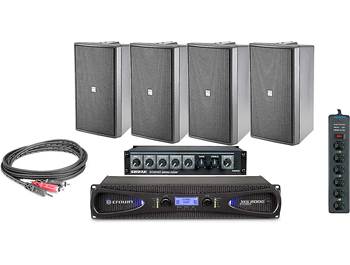Learning How Professionals Purchase the Perfect CCTV Setup to Fulfill Your Security Needs
Learning How Professionals Purchase the Perfect CCTV Setup to Fulfill Your Security Needs
Blog Article
As it comes to guaranteeing protection and safeguarding, choosing the appropriate CCTV setup is essential. CCTV television (CCTV) setups are commonly utilized for monitoring in different environments, such as residences, businesses, and community spaces. These systems help monitor activities, deter crime, and offer important proof in case of incidents. Understanding the different components and features of CCTV setups can aid people and entities make informed decisions that best satisfy their safeguarding requirements.
One of the first considerations when choosing a CCTV setup is the kind of surveillance devices needed. There are numerous types of cameras available, including bulb devices, bullet cameras, and PTZ (pan-tilt-zoom) cameras. Bulb devices are commonly used for indoor surveillance due to their subtle appearance, while bullet cameras are more visible and are generally employed externally. PTZ devices offer the ability to zoom in on particular locations and can be operated from a distance. Assessing the particular environment and the areas that require surveillance will help decide which type of camera is best appropriate.
Another important factor to consider is the clarity of the cameras. Increased resolution devices provide clearer pictures, which can be critical for identifying individuals or features in a setting. Common clarities include basic definition (SD), high resolution (HD), and superior definition (UHD). Although increased clarity devices may come at a increased price, they can considerably enhance the efficacy of a surveillance system. It is also crucial to consider the illumination conditions in the location being observed, as some cameras are more equipped to manage low-light conditions than alternative options.
Recording options are also a critical aspect of CCTV setups. Footage footage can consume up a substantial amount of storage, so it is crucial to choose a system with sufficient capacity capacity. Many setups provide cloud storage, which allows for remote retrieval to recordings and can provide additional safeguarding in the event of theft or destruction to the tangible storage. Alternatively, local options, such as electronic footage recorders (DVRs) or network footage devices (NVRs), can be employed. Understanding the capacity requirements based on the number of cameras and the required holding period for footage is crucial for efficient surveillance.
Finally, the setup and maintenance of the CCTV system should not be overlooked. Expert installation can ensure that cameras are positioned in ideal locations for maximum coverage. Additionally, routine maintenance is necessary to keep the system functioning effectively. This entails checking camera angles, wiping optics, and ensuring that software is current. Some setups also provide remote monitoring features, enabling users to access real-time recordings from their smartphones or computers. This capability can provide reassurance and enhance the general efficacy of the safeguarding setup.
In conclusion, visit this website selecting the ideal CCTV system involves thoughtful evaluation of various aspects, including camera types, resolution, storage options, and installation. By comprehending these elements, individuals and entities can select a setup that effectively meets their security needs. A well-planned CCTV system not only helps deter criminal activity but also offers important evidence when necessary, making it an essential investment for safety and safeguarding.